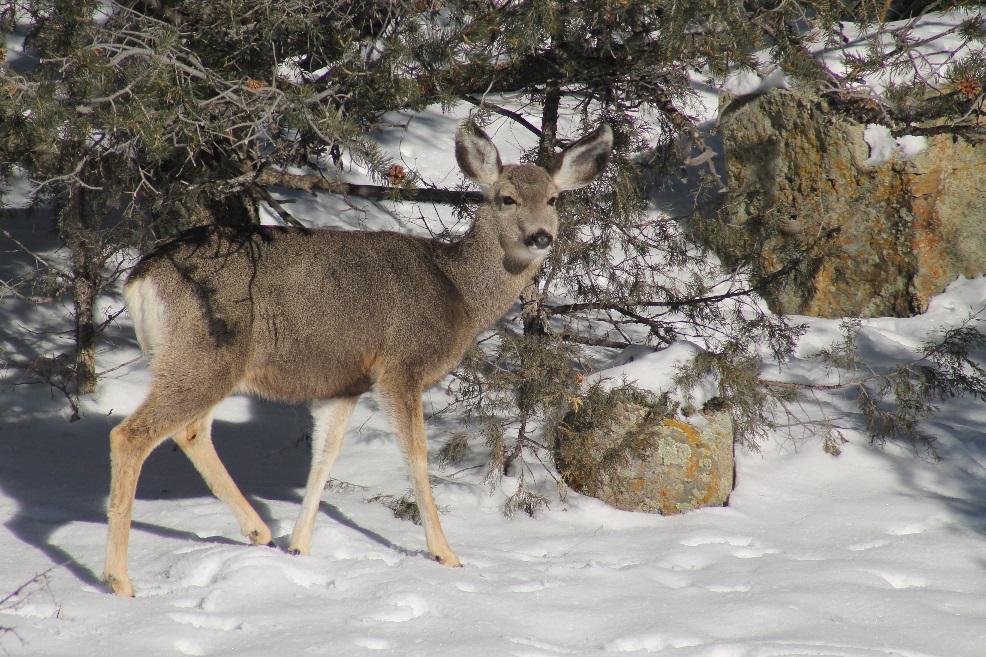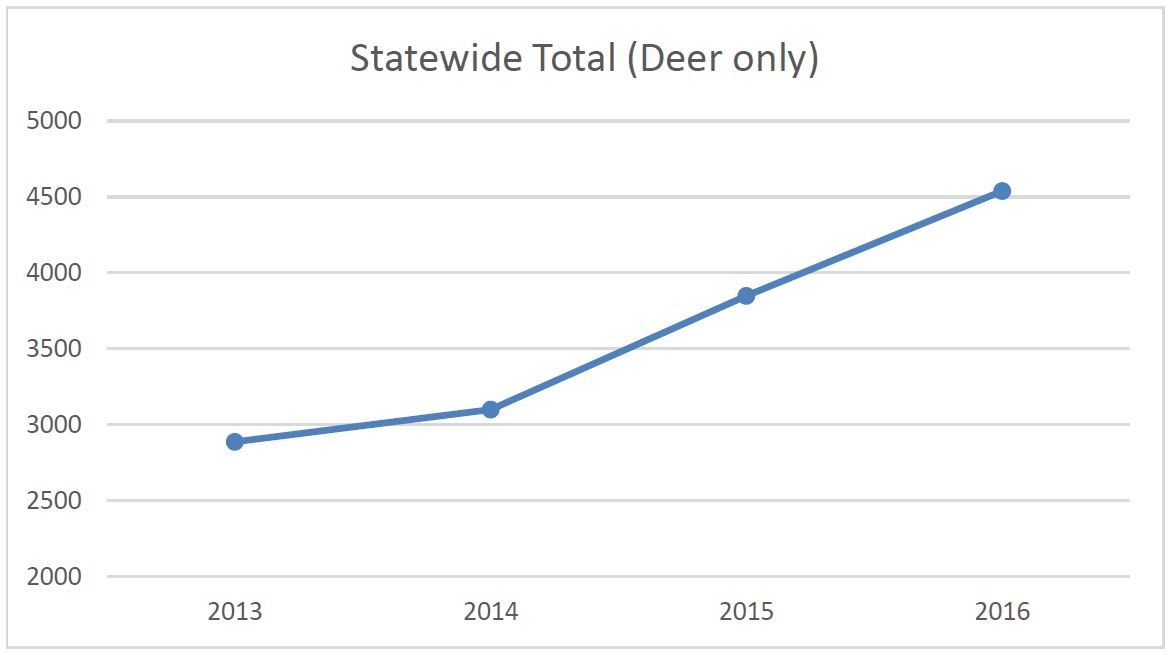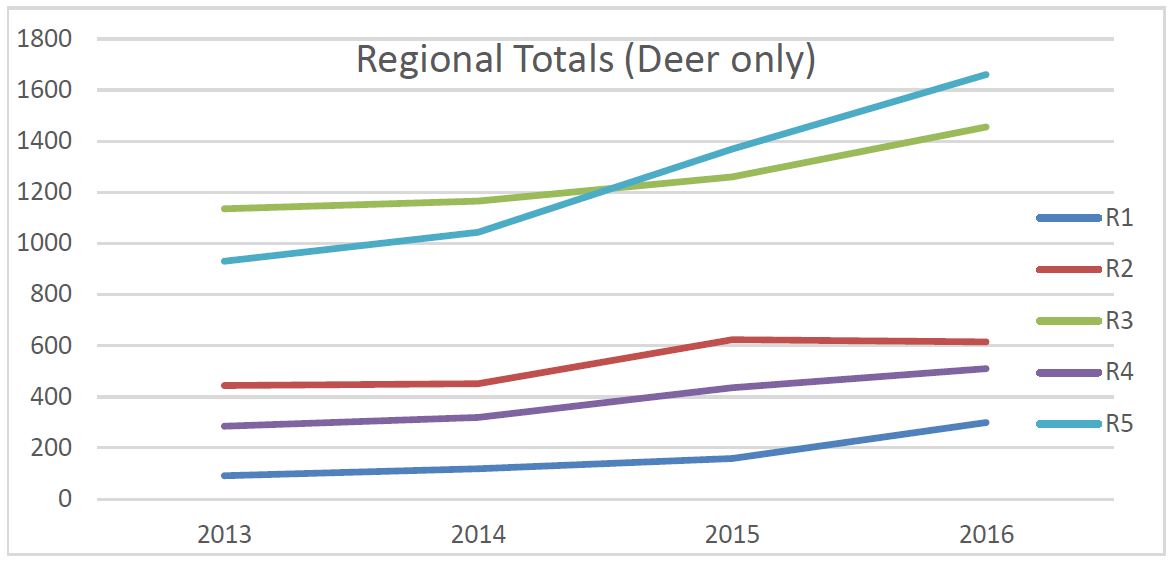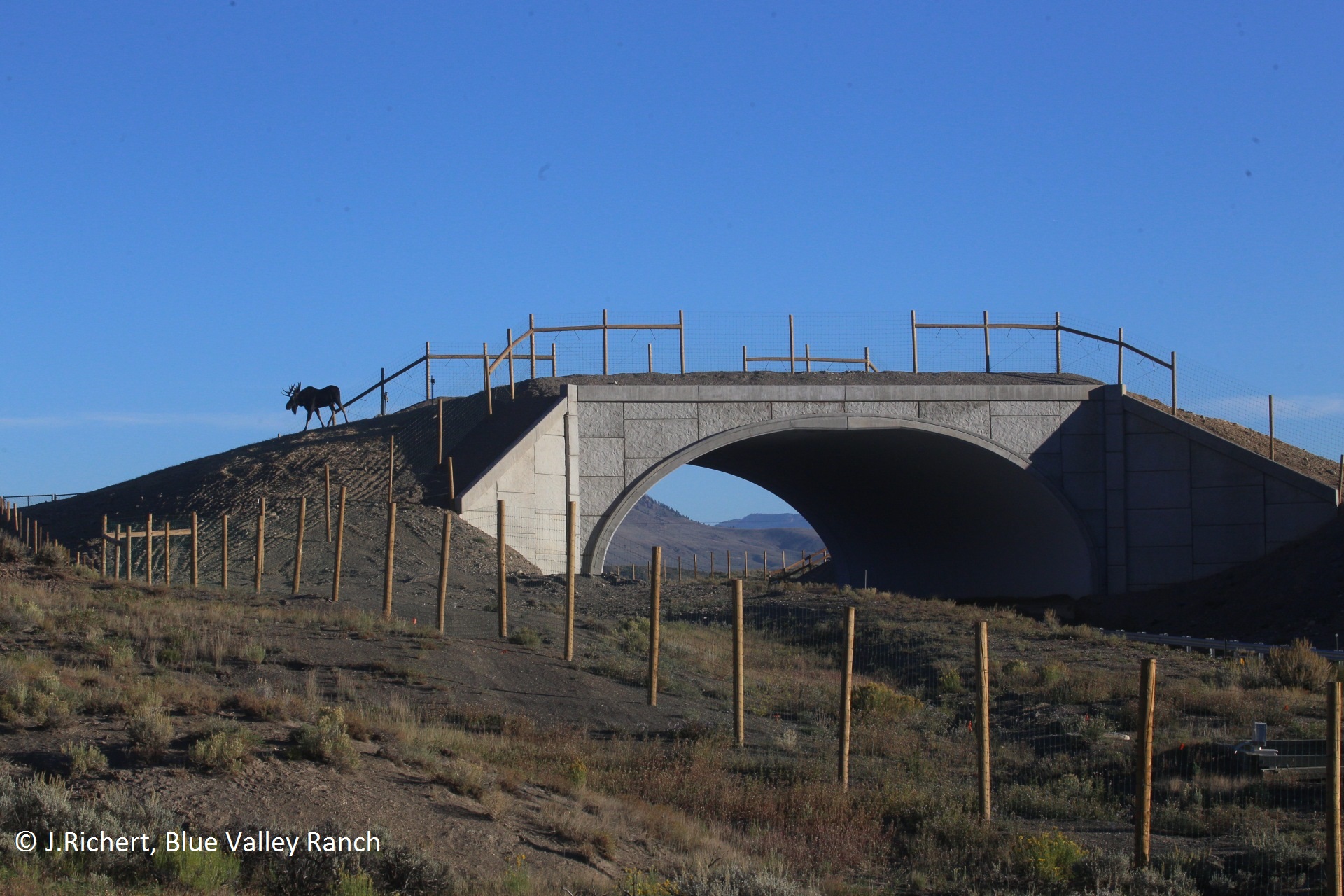Changing Weather Pushes Wildlife to Lower Elevations

STATEWIDE—Without warning, at almost any time of day or night, motorists can encounter the sudden movement of wildlife crossing the road. Vehicle collisions with wildlife happen year round, but statistics indicate that the migration of animals to their wintering habitats can lead to higher incidents of animal-vehicle collisions (AVC) during the fall and winter seasons.
CDOT and partnering agencies the Colorado Parks and Wildlife (CPW) and the Colorado State Patrol (CSP) remind motorists to be alert because, "Wildlife are on the Move!"
"As days shorten, temperatures drop and snow begins to fall, many wildlife species move from their high elevation summer ranges in the mountains and plateaus and travel to lower elevation winter ranges in the foothills and valleys," said Mark Lawler, CDOT biologist. "The essential habitats for these animals are intersected by Colorado's highways, forcing wildlife to cross roadways in search of food, water, space and shelter."
Over the past four years the state has seen a rise in the number of reported wildlife related collisions. State agencies track reported collisions with wildlife. The statistics count all types of animals including small and large mammals―from raccoon and skunk to moose and elk. However, the most significant number of AVCs occur with deer. In 2016, agencies reported more than 4,600 deer killed on Colorado highways.

Motorists should be aware that a majority of AVCs occur from dusk to dawn, when wildlife are more active and, unfortunately, are more difficult to see.
CSP Capt. Adrian Driscol offered this advice if a wildlife collision does occur, "Drivers should brake, look, and steer. Brake, slow down and concentrate on keeping control of your vehicle. Look around and be aware of your surroundings, especially other vehicles in front or behind you. Then steer and move your vehicle to a safe position off the road."
The best practice for drivers is to be aware, drive with caution and slow down, especially at night. While most every road in both rural and urban areas will have wildlife attempting to cross the roadway, road kill statistics have pinpointed some highways that are more frequently used as corridors for wildlife on the move. (See highways listed in the "CDOT regions at a glance" section below.)
Driscol added, "If you see one deer or elk, more than likely you can expect others crossing the highway, too."
CDOT Regions at a Glance
2016 Road Kill Data or AVC (Animal Vehicle Collisions) Summaries by Region
Region 1 (Metro Denver Area)
Region 1 (R1) has seen a rise in reported AVCs (all types of animals) over the past four years, with the exception of 2014.
- 2013 (339), 2014 (239), 2015 (338), 2016 (425)
The deer-specific AVCs for R1 in 2016 totaled 301. The highway corridors with significant numbers of AVC include:
- US 285, MP 230-250, Conifer to the CO 470 Interchange: 86 AVC (deer)
- I-70, 250-270, Genesee Park to Denver: 38 AVC (deer) I-25, MP 180-190, Castle Rock to 2 miles north of Castle Pines: 7 AVC (deer)
- I-25, MP 161-180, 18-mile segment between south Castle Rock and Monument. This area, known as The Gap, is particularly susceptible to AVCs due to the rural nature of the area and Greenland Open Space, south of Larkspur.
Region 2 (Southeast Colorado)
Region 2 (R2) has seen a steady rise in reported AVCs (all types of animals) over the past three years.
- 2013 (635), 2014 (632), 2015 (882), 2016 (926)
The deer-specific AVCs for R2 in 2016 totaled 615. The highway corridors with significant numbers of AVC include:
- US 24, MP 290-310, Woodland Park to Colorado Springs: 105 AVC (deer)
- I-25, MP 150-163, Colorado Springs to Monument: 29 AVC (deer)
- CO 115, MP 40-50, south of Colorado Springs: 30 AVC (deer)
Region 3 (Northwest Colorado)
Region 3 (R3) has seen a rise in reported AVCs (all types of animals) over the past four years.
- 2013 (1597), 2014 (1627), 2015 (1859), 2016 (2086)
The deer-specific AVCs for R3 in 2016 totaled 1455. The highway corridors with significant numbers of AVC include:
- CO 13, MP 100-120, north of Craig to Wyoming state line: 118 AVC (deer)
- US 550, MP 120-140, south of Montrose: 97 AVC (deer)
- I-70, MP 150-180, Vail to Eagle: 78 AVC (deer)
Region 4 (Northeast Colorado)
Region 4 (R4) saw a rise reported AVCs (all types of animals) over three years, then a significant drop for 2016.
- 2013 (915), 2014 (1205), 2015 (1701), 2016 (1356)
The deer-specific AVCs for R4 in 2016 totaled 586. The highway corridors with significant numbers of AVC include:
- US 287, MP 360-390, Co 14 intersection near Fort Collins to Wyoming state line: 72 AVC (deer)
- US 36, MP 10-20, Boulder to Estes Park: 45 AVC (deer) US 287/US 40, MP 430-450: 28 AVC (deer)
- US 287/US 40, MP 430-450: 28 AVC (deer)
Region 5 (Southwest/South Central Colorado)
Region 5 (R5) has seen a rise in reported AVCs (all types of animals) over the past four years.
- 2013 (1220), 2014 (1283), 2015 (1636), 2016 (2065)
The deer-specific AVCs for R5 in 2016 totaled 1660. The highway corridors with significant numbers of AVC include:
- US 160, MP 90-110, Durango (Elmore's Corner) to east of Bayfield (La Plata/Archuleta County line): 204 AVC (deer)
- US 160, MP 190-210, South Fork to eight miles east of Del Norte: 115 AVC (deer)
- US 550, MP 100-120, Ridgway to south of Montrose: 85 AVC (deer)

Improving Highway Safety
To address the growing concern about AVCs on Colorado highways, several state and federal agencies met this past summer at the first-ever Wildlife and Transportation Summit. The purpose of the two-day event was to establish partnerships and develop an action plan to improve highway safety and protect wildlife populations and their movement corridors.
"The Summit focused on informing and fostering partnerships with important stakeholders," said Dean Riggs, CPW deputy regional manager. "As we move forward, it's essential to continue educating agencies' staff, regional decision-makers, private stakeholders and the general public on current issues such as animal-vehicle collisions, highway safety, and implementation of highway mitigation features like wildlife fencing, overpasses and underpasses."

Participants of the Summit also took part in a field trip to the recently completed Colorado Highway (CO) 9 Wildlife & Safety Improvements project. The project included the installation of two wildlife overpasses, five wildlife underpasses and high wildlife fencing. The project will be used as a potential model for future projects across the state.
"This 11-mile stretch of highway in north-central Colorado has seen an 87 percent decrease in animal-vehicle collisions since the project's two-phased completion," added Riggs. "We are anxious to see how the amount of collisions may change on this corridor as the five year study progresses."
A moose uses the wildlife overpass on CO 9 in the fall of 2016.
Stay Informed
- CDOT's Wildlife Program web page
- CO 9 Wildlife & Safety Improvements web page
- Colorado Parks & Wildlife website.
- Sign up for project alerts.
- See scheduled lane closures.
- Get real-time road conditions on COtrip, or by dialing 511 from anywhere in the state.
- Follow us on Facebook or Twitter
